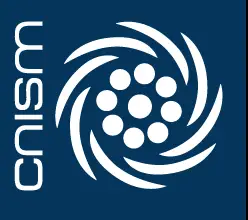Partners and suppliers
Partners

CNISM
The Consorzio Nazionale Interuniversitario per le Scienze Fisiche della Materia (CNISM) carried out interdisciplinary research in the field of physical sciences of matter and their technological applications until December 2021, operating through a scientific network made up of its units and regional laboratories. Approximately 1,300 researchers from 39 affiliated Italian universities were part of CNISM.
The collaboration between CNISM and the University of Calabria dates back to 2011, when the two organizations launched a joint initiative to establish a service center dedicated to the study of materials for advanced technologies. The project, named MaTeRiA (Materials, Technologies, and Advanced Research), secured significant funding in 2012 through a competitive call under the PON Research 2007-2013 program. The heart of the project is the STAR X-ray source, which in 2021 was donated by CNISM to the University of Calabria, entrusting it with the responsibility of completing its development and overseeing its management.

UNIMIB
On June 7, 2022, in the presence of the Minister for University and Scientific Research Maria Cristina Messa, the Rectors of the University of Calabria, Prof. Nicola Leone, and the University of Milano-Bicocca, Prof. Giovanna Iannantuoni, signed a memorandum of understanding that strengthens and consolidates the existing collaboration between the two universities, also through innovative forms of partnership, including the exchange of personnel.
The agreement includes the sharing of the institutional activities of Prof. Alberto Bravin, who brings to Unical his twenty years of experience at the European Synchrotron Radiation Facility (ESRF) in Grenoble, France. The scientist, now a Full Professor at the Department of Physics “Giuseppe Occhialini” at Milano-Bicocca, is dedicating 30% of his teaching and research activities to Unical, with a particular focus on the scientific applications of X-rays produced by the STAR source.
Suppliers

INFN
The Laboratori Nazionali di Frascati (LNF) and the Milan Section of Istituto Nazionale di Fisica Nucleare (INFN) have significantly contributed to the development of the STAR X-ray source. Drawing on its extensive experience in the field, INFN has been responsible for both the design and construction of the accelerators and all the necessary instrumentation for the production of X-rays through inverse Compton scattering.
In May 2021, INFN signed a contract for the implementation and commissioning of an upgrade to the current IR STAR, equipping the X-ray source with two distinct beamlines that will operate at different energies and on different materials.
The scientific director of the project for increasing the electron beam energy up to 150 MeV—allowing STAR to use ultra-high-intensity electron beams for the generation of advanced X-ray characteristics—is Luca Serafini, a research director at the INFN Milan Section.

Elettra Sincrontrone
Elettra Sincrotrone Trieste S.C.p.A. is a multidisciplinary research center of excellence specializing in the generation of synchrotron light and high-quality free-electron lasers, as well as their applications in material and life sciences.
Elettra Sincrotrone has provided the IR STAR with the high-energy microtomography experimental station called µTomo and is currently responsible for the development of µTomo 2, a new experimental microtomography station dedicated to advanced material analysis.
The beamline utilizing the high-quality X-ray radiation produced by the STAR source will enable the non-invasive and non-destructive examination of the internal structure and the chemical and physical composition of objects and artifacts through the acquisition of ultra-high-resolution 3D images. The team of experts in Trieste is led by Dr. Diego Dreossi.

ASF Metrology
ASF METROLOGY markets X-Ray Tomography Systems produced in Germany by PROCON X-Ray and supplies the STAR Infrastructure with the X-ray tomography system, including the Hutch, access control, beam transport and shaping line, ionization chamber, and safety systems.
The core of the measurement system will consist of a precision sample stage for positioning the specimen to be scanned and two different image detectors—one for high resolution and one for low resolution. These devices will be installed on dedicated motion systems that allow precise positioning of both the sample and the detector within the beam, giving the operator the ability to set the optimal geometry for tomographic scanning.



